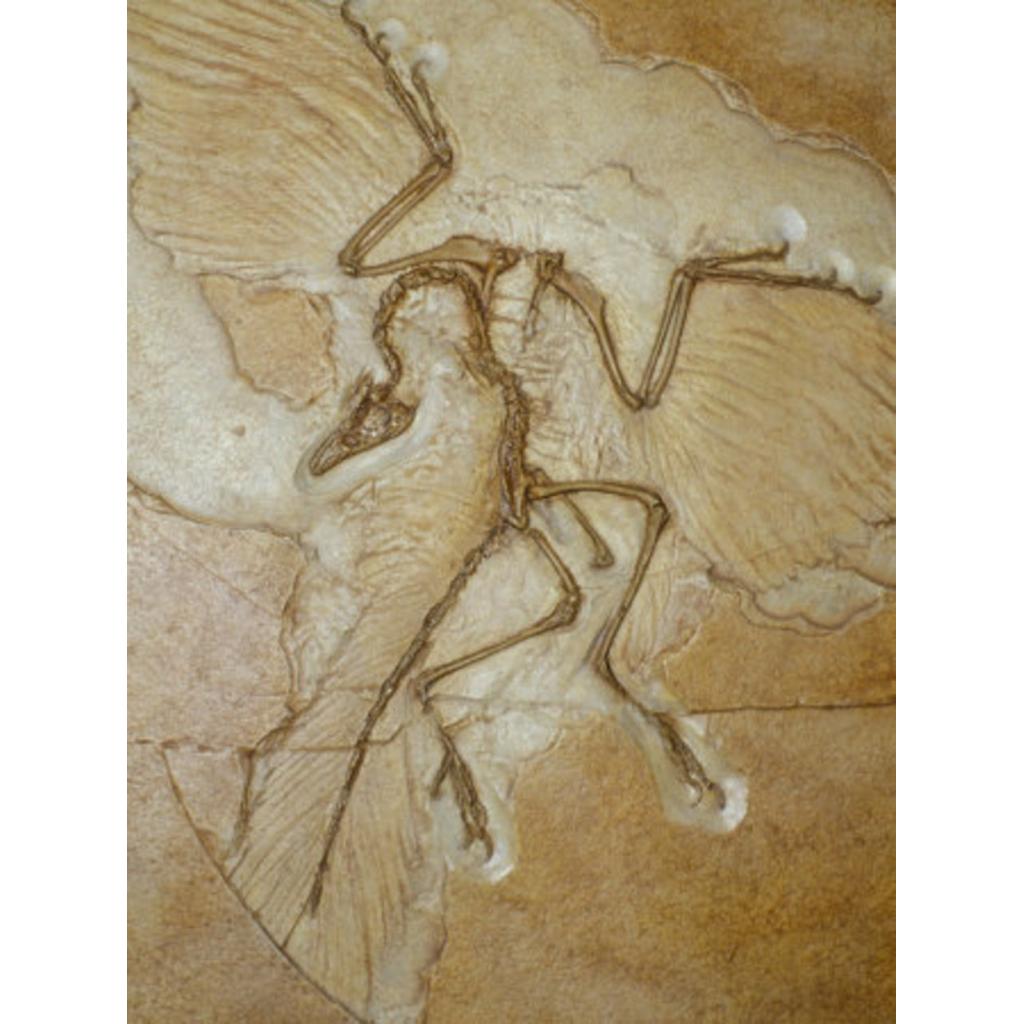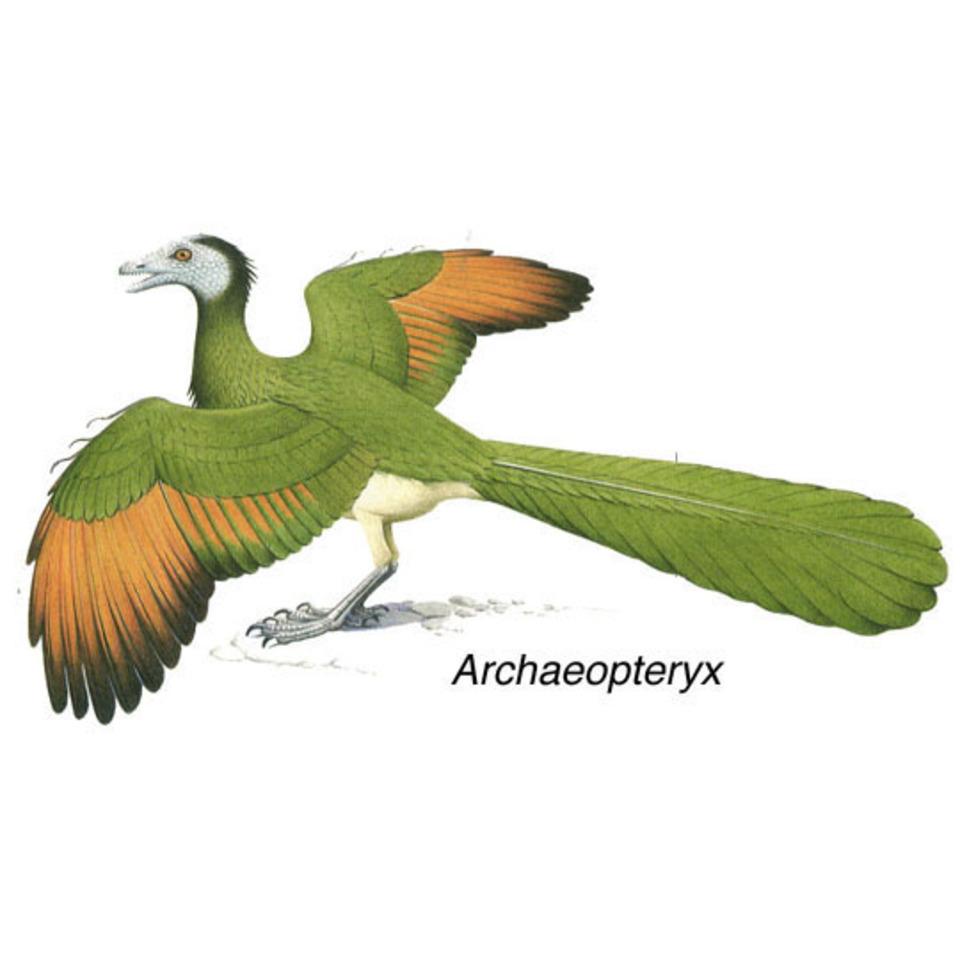A particulary important and still contentious discovery is Archaeopteryx lithographica, found in the Jurassic Solnhofen Limestone of southern Germany, which is marked by rare but exceptionally well preserved fossils. Archaeopteryx is considered by many to be the first bird, being of about 150 million years of age. It is actually intermediate between the birds that we see flying around in our backyards and the predatory dinosaurs like Deinonychus. In fact, one skeleton of Archaeopteryx that had poorly preserved feathers was originally described as a skeleton of a small bipedal dinosaur, Compsognathus. A total of seven specimens of the bird are known at this time. It has long been accepted that Archaeopteryx was a transitional form between birds and reptiles, and that it is the earliest known bird.
Lately, scientists have realized that it bears even more resemblance to its ancestors, the Maniraptora, than to modern birds; providing a strong phylogenetic link between the two groups. It is one of the most important fossils ever discovered. Unlike all living birds, Archaeopteryx had a full set of teeth, a rather flat sternum (“breastbone”), a long, bony tail, gastralia (“belly ribs”), and three claws on the wing which could have still been used to grasp prey (or maybe trees). However, its feathers, wings, furcula (“wishbone”) and reduced fingers are all characteristics of modern birds. As you can see, Archaeopteryx certainly had feathers, although whether these feathers were used for regulating its body temperature or for flight is a matter still open for debate. Feathers may have originally evolved for insulation and then been co-opted into flight. The origins of flight, and the actual flight capabilities of Archaeopteryx, are debated. Two models of the evolution of flight have been proposed: in the “trees-down” model, birds evolved from ancestors that lived in trees and could glide down, analogous to today’s flying squirrels. In the “ground-up” model, the ancestors of birds lived on the ground and made long leaps. For more information, see our new exhibits on vertebrate flight and avian flight. The flight stroke may have originated as an extension of the grabbing forearm motions that smaller, agile theropods such as Deinonychus may have used to grab and hang on to prey. As you know if you’ve ever cut up a chicken, living birds (except for flightless birds like the ostrich and kiwi) have a keeled sternum to which the large, powerful flight muscles attach. Archaeopteryx, however, had a comparatively flat sternum. Although it is currently thought that Archaeopteryx could sustain powered flight, it was probably not a strong flier; it may well have ran, leaped, glided, and flapped all in the same day.


